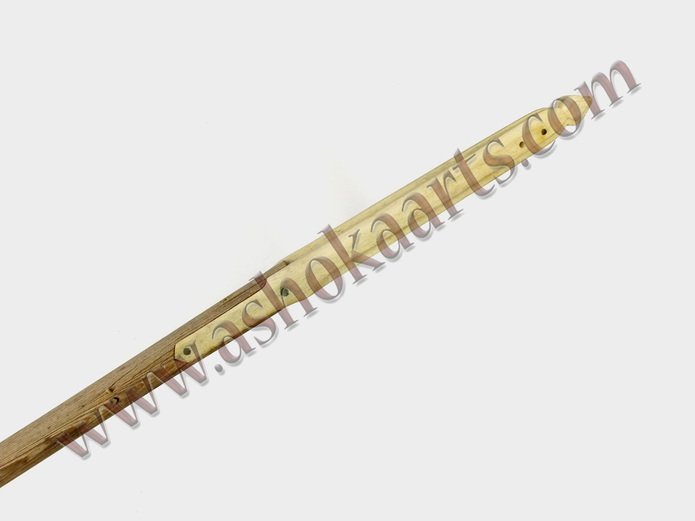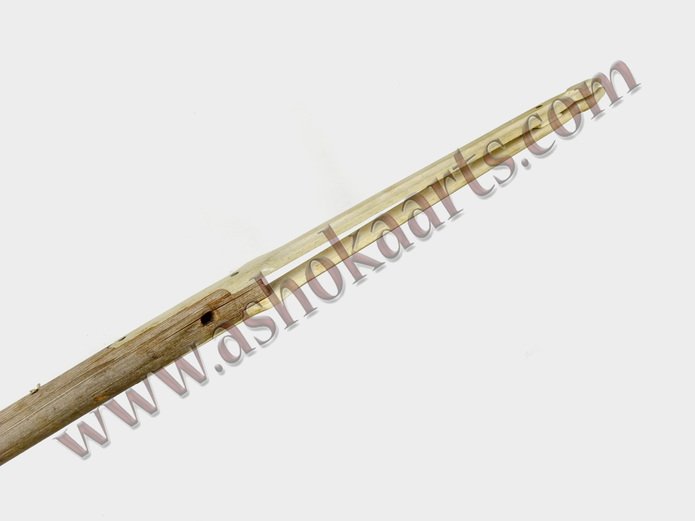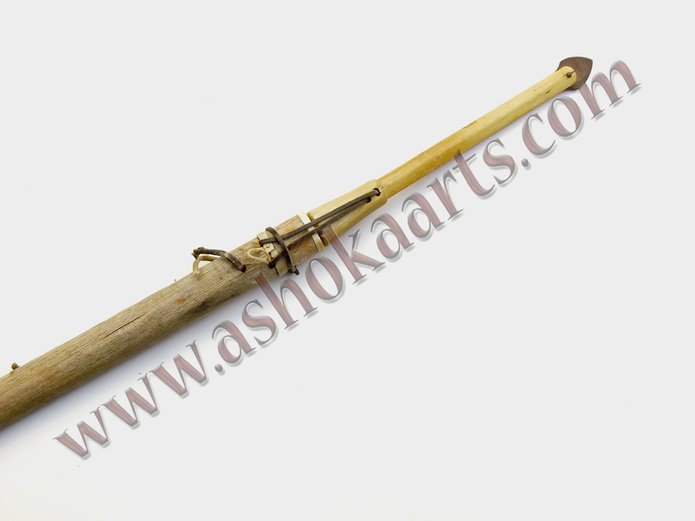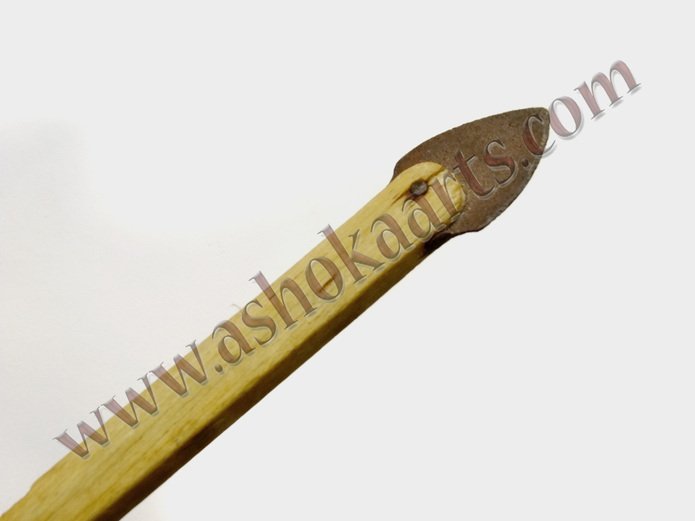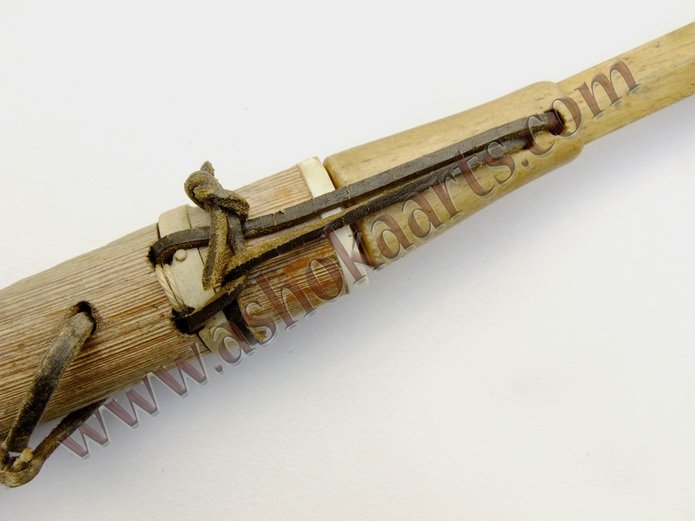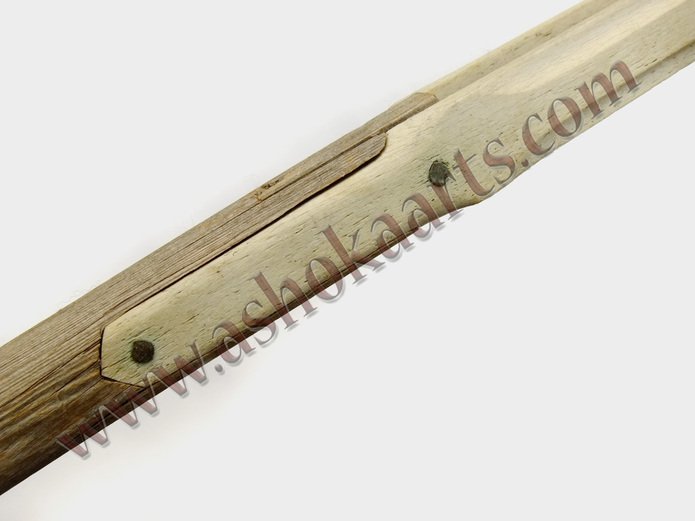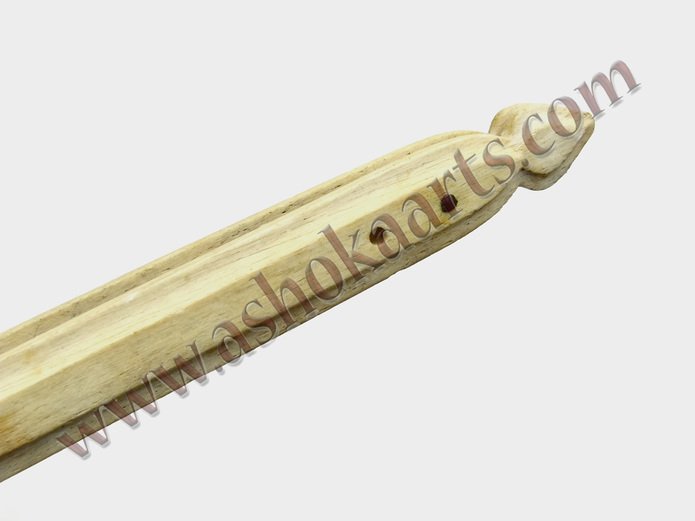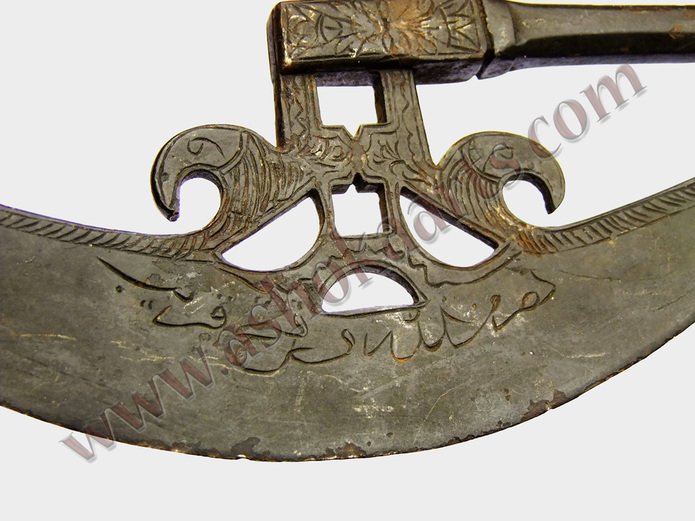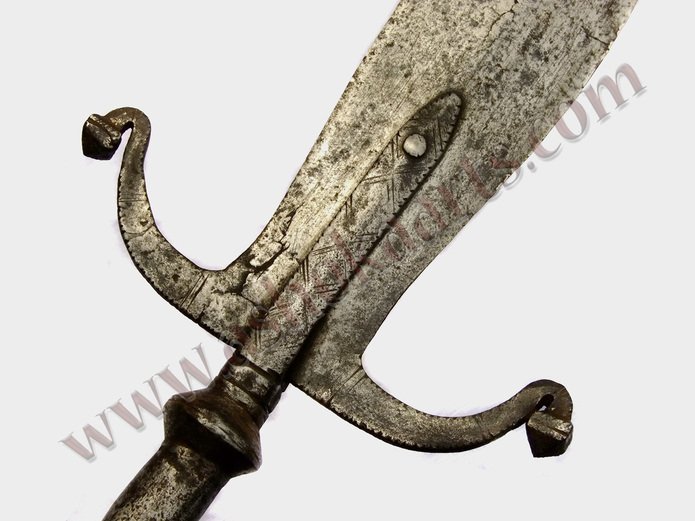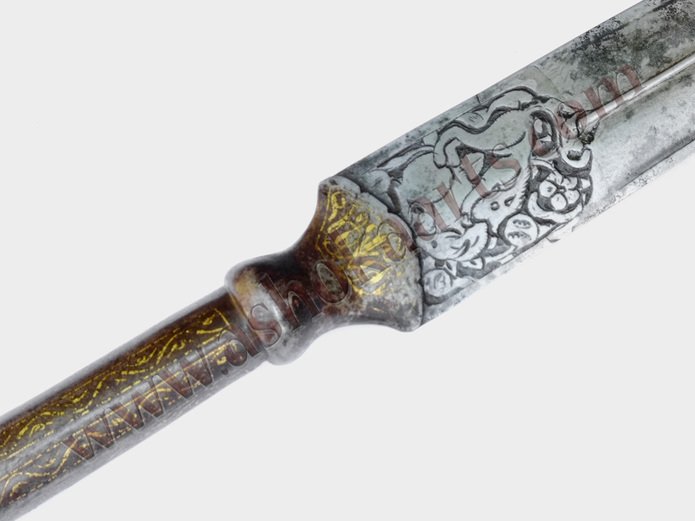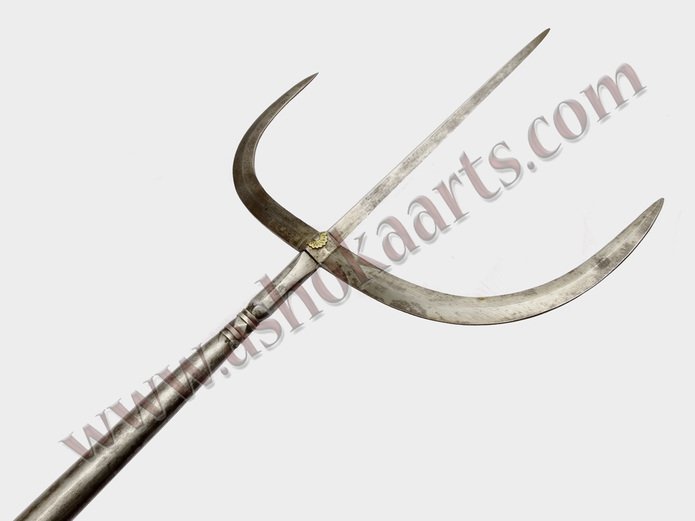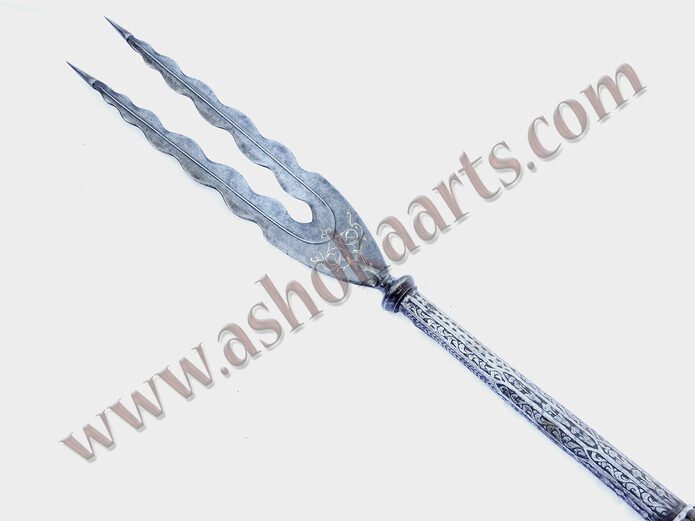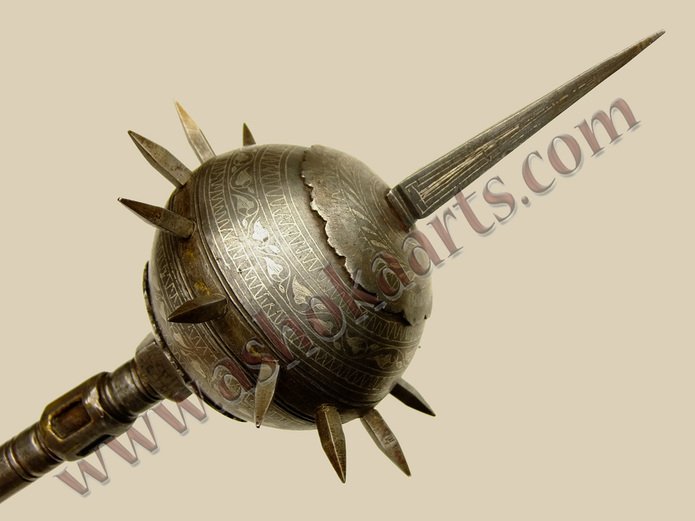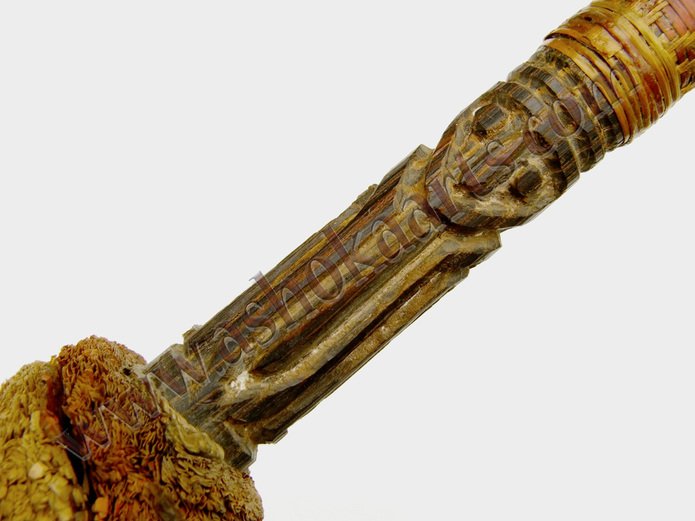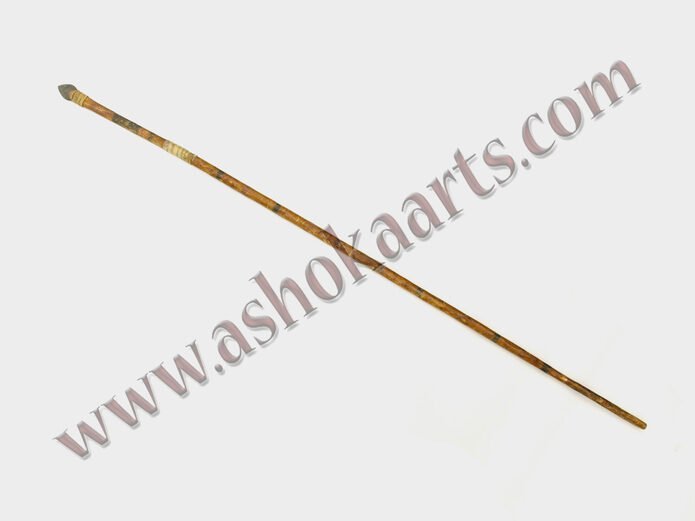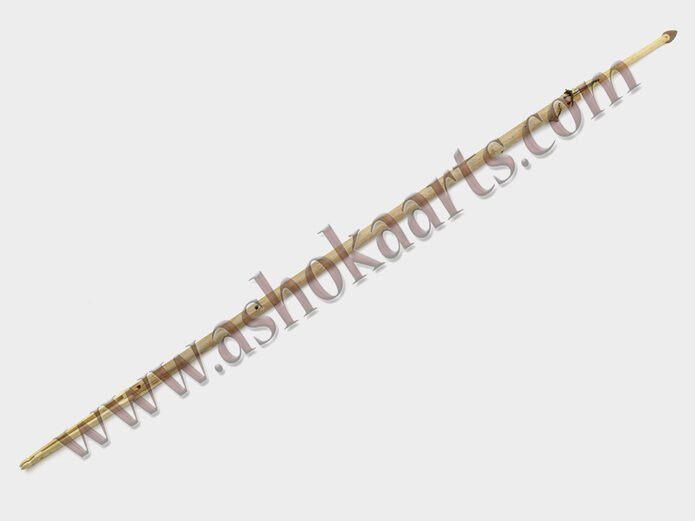Rare Inuit winged Harpoon ernangnaq West Greenland
Very rare type of Inuit Harpoon ‘ernangnaq’. Known as winged harpoons, this form is very ancient and was virtually out of use by the 20th century. The two side ‘wings’ at the end of the harpoon shaft served possibly to stabilise the harpoon during flight, and possibly also as an extra mechanism to give greater distance to the throw. As with this example, they are almost always made from marine ivory or whalebone, here deocrated simply and attached to the main wooden body with copper pins. In between the wings is a short length of string in this case to which the throwing board peg would be attached. The main harpoon shaft is a light pine type wood, often douglas fir, clearly old and discoloured from the elements. The business end features marine ivory fittings bound with leather hide thong probably sealskin, and a long marine ivory point which slots over a nub on the shaft end itself. The tip is a steel blade. The norsaq or harpoon thowing stick is simply made of pine type wood with a projecting peg, possibly later than the harpoon itself. West Greenland, probably early 20th century
| Weight | 12 kg |
|---|
Rare Inuit winged Harpoon ernangnaq West Greenland
$5,000.00
In stock
